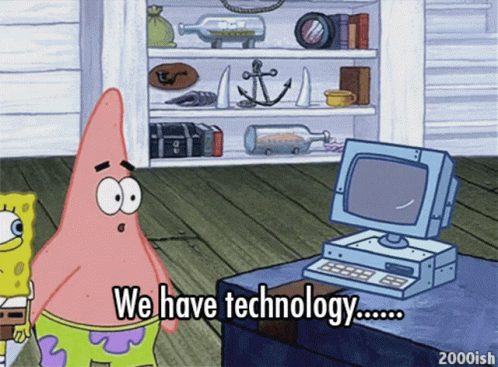Implementing improvements in organizations is not easy, even the great technological advances have required not only development but also a change in the organization’s culture and processes
Such is the case of the adoption of electric motors, which with their invention brought about a change in the way industries produced and added value to society
In 2017 the BBC published the article “Why the extraordinary invention of electricity was such a disappointment a century ago” with which I intend to highlight the importance of taking a holistic view when including new technology
One hundred years ago when electricity was introduced in companies it proved to be a disappointment because at first they did not perceive increases in productivity, many believed that by incorporating electric motors they would obtain higher profits.
In the late 1870s, the light bulb was invented, but it was not until 1881 when Thomas Edison built power plants in Manhattan (USA) and London (UK) that electricity was marketed as a commodity
Two years later some companies began to use electric motors to drive their machines, however, by 1900 only 5% of the mechanical energy of U.S. factories came from this source, companies continued to use steam power although this implied an incredible infrastructure
The factories had a huge steam engine usually in the center, from where everything was connected to the central drive shaft that ran the length of the factory, if a single machine required power the fire had to be fed with coal, which meant that the whole system was in constant motion increasing the risks of trapping an employee. According to the need, the shaft was connected to machines on a second floor or between buildings. For the system to work properly, it had to be lubricated with whale oil and secured with a fire protection system
When businessmen bet on replacing steam engines with electric motors with high expectations of modernization, they were disappointed with the benefits, the problem was that they did not make the change in the processes required to adequately adopt the new technology. Basically, they only substituted one machine for another, but did not change the way activities were carried out, the layout of the plant, or the organizational culture. This caused many to return to the steam engine
The above demonstrates that changes in technology alone do not bring with them the key to success, different thinking is required to achieve the desired potential. At the time the companies simply changed their power source, but everything else remained the same, it was not until they explored new ways of using small electric motors differently that they began to make a profit
When we started to think not only about the machine but also about the processes, we were able to optimize the results; we went from working only by centralized cells depending on the power source required, to production lines. Now that it was no longer necessary to connect everything to the main axis, it was possible to redistribute the plant thinking about displacement efficiencies, efficient movements and better use of space.
Space was also optimized, the companies did not require a steam tower, allowing them to be more flexible, and they began to focus on productivity and process safety
At the beginning, no change is easy, which is why it took so long to take advantage of electric energy, however, when people see the positive potential, they often go from being obstacles due to their resistance or fear, to promoters of the same

As time went by, the electric grid lowered its cost, people started to be agents of change, propositive, now they had more freedom, so the way of hiring, training and remuneration changed. It took 50 years to adapt, but the impact was so positive that work went from being a matter of how much I do (quantity) to how well I do it (quality), which resulted in better salaries
As a Process Analyst at Personal Soft it is my mission to design efficient processes, thinking about developing activities with zero tendency of manual operation that meet the objectives of the organization. To achieve this, it is important to work as a team with users and learn to identify the best methodology that can be applied according to the culture of the company, the communication channels used and the level of maturity in digital transformation. If we do not use the tools and build solutions together with the customer in mind, the same thing can happen to our improvements as it happened to electric energy when it was first implemented: it can be perceived as something without added value, people quickly return to work under the same old schemes and the new process falls into disuse
There are many continuous improvement methodologies that can be used to co-create with users, some of the most commonly used ones are
There are many continuous improvement methodologies that can be used to co-create with users, some of the most commonly used ones are
Design thinking
☑️ It is based on understanding and providing solutions to the user’s needs. It has 5 stages (they are not linear): 1) Empathize with the user to understand the needs. 2) Define the problem 3) Prototype: make samples of the possible solutions 4) Test: test the proposals and identify the one that generates the most value
Customer Journey:
☑️ It consists of identifying the entire step-by-step process that a customer goes through to obtain the desired result (product or service). It maps the points of contact, the environment, the perception and feeling of the customer at each stage of the process. It is used to identify pain points and work on improvements that the customer really perceives
DMAIC:
☑️ It stands for D-Define, M-Measure, A-Analyze, I-Improve and C-Control
Define:
☑️ The scope of the improvement to be worked on is delimited
Measure:
☑️ Collection of quantitative data that will help establish the project baselines
Analyze:
☑️ Identify the root cause of the problem
Improve:
☑️ Identify and test possible solutions
Control:
☑️ The implemented solution is monitored in order to validate its effectiveness
Lean Six Sigma:
☑️ Seeks to reduce process variability and reduce waste by using statistical tools, DMAIC is used
Logical Framework:
☑️ It is used to facilitate the conceptualization, design and execution of projects. Its artifacts (such as the Vester matrix) facilitate the structuring in planning because it allows to easily identify the root cause of the problem to be worked on, at the same time it allows to identify the most successful solutions.
PMI:
☑️ The PMBOK is a guide to develop all the important knowledge areas in a project in order to plan, implement, close and monitor them properly.
Agile frameworks, such as Scrum:
☑️ It is a set of best practices to work collaboratively, as a team, and get the best possible result. In Scrum, partial deliverables are made that generate value and increase throughout the project. It provides very practical and useful artifacts and ceremonies for team management, which allow to identify improvement opportunities and apply them quickly
On the other hand, it is also important to incorporate to the designs proposals with technological solutions that facilitate the manual activities, for this there are many options available such as RPA, ETL, Services, etc.
We can all be agents of change and contribute with what we know to strengthen companies and grow together with them.









0 Comments